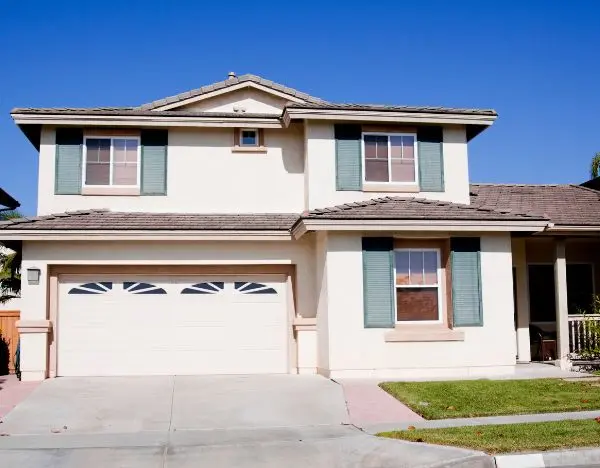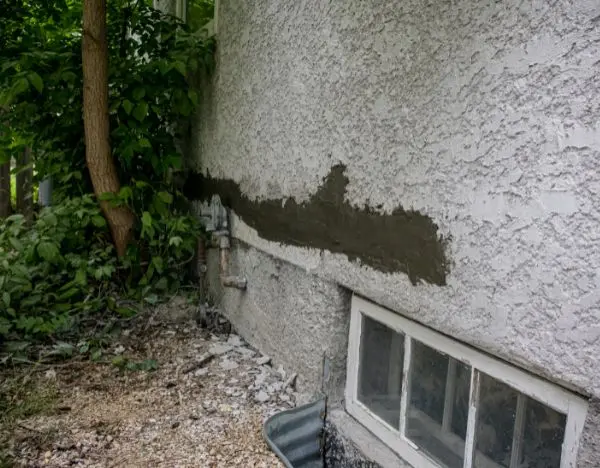How Do I Know If My Stucco Is Letting Water Into My House?

Your home's exterior wall system functions like layers of protection. Properly installed stucco works in conjunction with a water-resistant barrier and flashing to direct water away from your home's structure. When any component of this system fails, water can become trapped between the stucco and your home's framing, leading to deterioration. Many people ask, "How Do I Know If My Stucco Is Letting Water Into My House?" Let's learn how to tell if your stucco is letting water into your house.
How Do I Know If My Stucco Is Letting Water Into My House?
As construction defect attorneys specializing in stucco failure cases, we at WRZ Law understand that detecting water intrusion early can save homeowners thousands in repairs and prevent serious structural damage. Here are the key indicators that your stucco may be compromising your home's water resistance:
- Exterior Discoloration: Dark patches or staining on your stucco exterior, particularly after rainfall, indicate moisture retention within your wall system.
- Water Stains: Brown or rust-colored streaks beneath windows, doors, or roof lines suggest water penetration through compromised stucco surfaces.
- Stucco Cracks: Cracks wider than 1/16 inch can create direct pathways for water infiltration, leading to extensive moisture damage behind walls.
- Interior Wall Damage: Bubbling paint, peeling wallpaper, or warped baseboards near exterior walls signal moisture penetration through defective stucco.
- Musty Odors: Persistent musty smells, especially around exterior walls, often indicate hidden moisture and potential toxic mold growth within wall cavities.
- Window Problems: Water stains or deterioration around window frames suggest failed integration between stucco and window flashing systems.
- Efflorescence: White, chalky deposits on stucco surfaces indicate mineral buildup from water moving through the material and evaporating.
- Structural Deterioration: Softening or crumbling of building materials behind stucco points to long-term water intrusion and potential construction defects.
- Moisture Readings: Professional moisture meter testing revealing elevated levels within walls confirms water intrusion through compromised stucco systems.
- Temperature Variations: Thermal imaging showing unexpected cold spots on exterior walls indicates moisture trapped within the wall system.
Don't wait until water damage becomes severe. If you notice any of these warning signs, contact WRZ Law for a comprehensive evaluation of your home's stucco system. Our experienced construction defect attorneys can help determine if your water intrusion issues stem from improper installation, defective materials, or other construction-related failures. Remember, early intervention can prevent costly repairs and protect your legal rights as a homeowner.
For a free consultation about your potential stucco defect case, contact our experienced construction litigation team today.
Common Locations for Water Leaks in Stucco

As construction defect attorneys at WRZ Law, we've documented patterns in where stucco water intrusion typically occurs. Understanding these vulnerable areas can help homeowners identify potential problems before they lead to extensive damage. Here are the most common locations where stucco failures allow water infiltration:
- Window Perimeters: The junction between windows and stucco is particularly susceptible to water intrusion due to improper flashing installation or failed sealants around window frames.
- Door Thresholds: Entry points where doors meet stucco surfaces often experience water penetration, especially when kickout flashing or proper waterproofing methods weren't utilized during construction.
- Roof-Wall Intersections: Areas where rooflines meet stucco walls frequently allow water infiltration when proper step flashing or diverter flashing isn't correctly installed.
- Deck Attachments: Points where decks or balconies connect to stucco walls create vulnerable areas for water intrusion, particularly when proper flashing and waterproofing details are missing.
- Chimney Transitions: The intersection between chimneys and stucco surfaces often develops leaks due to inadequate flashing or improper integration of waterproofing materials.
- Utility Penetrations: Holes for pipes, vents, electrical boxes, and other utilities create weak points in stucco systems when not properly sealed and flashed.
- Corner Details: External corners of stucco walls frequently develop cracks and allow water infiltration due to improper reinforcement or installation techniques.
- Foundation Transitions: The area where stucco meets the foundation can allow water intrusion when proper weep screeds or drainage systems aren't installed correctly.
- Horizontal Surfaces: Any flat or nearly flat stucco surfaces that don't properly shed water create opportunities for moisture to penetrate the wall system.
- Expansion Joint Failures: Improperly installed or maintained expansion joints can allow water to penetrate behind the stucco system, leading to extensive damage.
If you've noticed moisture problems near any of these common leak locations, it may indicate serious construction defects in your home's stucco system. At WRZ Law, our experienced construction defect attorneys can help evaluate these issues and determine if they result from improper installation or defective materials. Contact us for a free consultation to discuss your rights and options for recovering the costs of proper repairs. Remember, early intervention can prevent minor leaks from becoming major structural problems.
What To Do If Your Stucco Is Letting Water and Moisture Into Your Home
At WRZ Law, we've helped numerous homeowners navigate the complex challenges of stucco water intrusion. If you suspect your home's stucco is compromised, taking immediate action is crucial to protect both your property and your legal rights. Here are the essential steps you should take:
- Document Everything: Take detailed photographs of all visible damage, including stains, cracks, and interior wall problems. Create a timeline of when you first noticed issues and maintain records of all related communications.
- Professional Inspection: Hire a certified building envelope specialist or stucco inspector to conduct thorough moisture testing and document the extent of water intrusion damage.
- Prevent Further Damage: Work with qualified contractors to implement temporary moisture prevention measures where possible without compromising evidence of construction defects.
- Preserve Evidence: Keep samples of damaged materials and maintain all inspection reports, as these can be crucial for establishing construction defect claims.
- Review Construction Documents: Gather all home construction documents, warranties, and maintenance records related to your stucco installation and repairs.
- Contact Your Insurance: Notify your homeowner's insurance company about the water intrusion issues, but be aware that many policies have limitations on stucco-related claims.
- Seek Legal Counsel: Consult with a construction defect attorney experienced in stucco cases before agreeing to any repairs or settlements with builders or insurance companies.
- Emergency Remediation: Address any immediate health concerns from mold growth while ensuring all remediation efforts are properly documented for potential legal claims.
- Builder Notification: Send formal written notice to your builder about the defects, following your state's construction defect notice requirements.
- Expert Assessment: Work with building science experts to determine the root cause of the water intrusion and document code violations or installation defects.
Don't face stucco water intrusion problems alone. At WRZ Law, we understand the technical, legal, and practical challenges of stucco defect cases. Contact our experienced construction litigation team for a free consultation to discuss your rights and options for recovering the costs of proper repairs. Time limitations may apply to your claims, so don't delay in seeking professional legal guidance.
When It's Time to Call a Stucco Defect Lawyer
At WRZ Law, we understand that deciding when to seek legal representation for stucco issues can be challenging. Our construction defect attorneys have helped countless homeowners recover damages for faulty stucco installation and water intrusion problems. Here are key situations that indicate it's time to consult with a stucco defect lawyer:
- Multiple Failed Repairs: Your builder or contractor has attempted repairs multiple times, but water intrusion issues persist, indicating deeper systemic problems.
- Significant Property Damage: You've discovered extensive moisture damage, mold growth, or structural deterioration behind your stucco walls that exceeds typical maintenance issues.
- Builder Unresponsiveness: Your builder or contractor has stopped responding to your concerns or is denying responsibility for obvious construction defects.
- Warranty Expiration Approaching: Your home warranty or state's statute of limitations for construction defects is nearing its end, requiring immediate legal action to preserve your rights.
- Insurance Claim Denial: Your homeowner's insurance has denied coverage for stucco-related damage, citing construction defects or improper installation.
- Code Violations: Professional inspections have revealed building code violations or improper stucco installation that doesn't meet industry standards.
- Health Concerns: Your family is experiencing health issues potentially related to mold growth from water intrusion through defective stucco.
- Repair Cost Disputes: Estimates for proper stucco remediation significantly exceed what your builder or insurance company is willing to cover.
- Multiple Affected Homes: Other homes in your development are experiencing similar stucco problems, suggesting systematic construction defects.
- Complex Documentation: You need help gathering and preserving evidence of construction defects, including expert testing results and repair histories.
Don't wait until water damage compromises your home's structural integrity or your family's health. At WRZ Law, our experienced construction defect attorneys can evaluate your case, help document the damage, and pursue appropriate compensation for proper repairs. We understand the technical aspects of stucco installation and the legal frameworks governing construction defect claims. Contact us today for a free consultation – the sooner you act, the better we can protect your rights and your home.
Protect Your Home and Your Rights
Don't let stucco defects compromise your home's integrity or your family's safety. At WRZ Law, our experienced construction defect attorneys understand the complex nature of stucco failure cases and can help you pursue the compensation you deserve for proper repairs. Contact us today for a free consultation to discuss your stucco-related concerns. Our team is ready to help you protect your investment.
